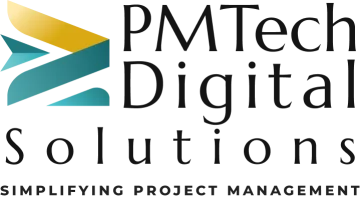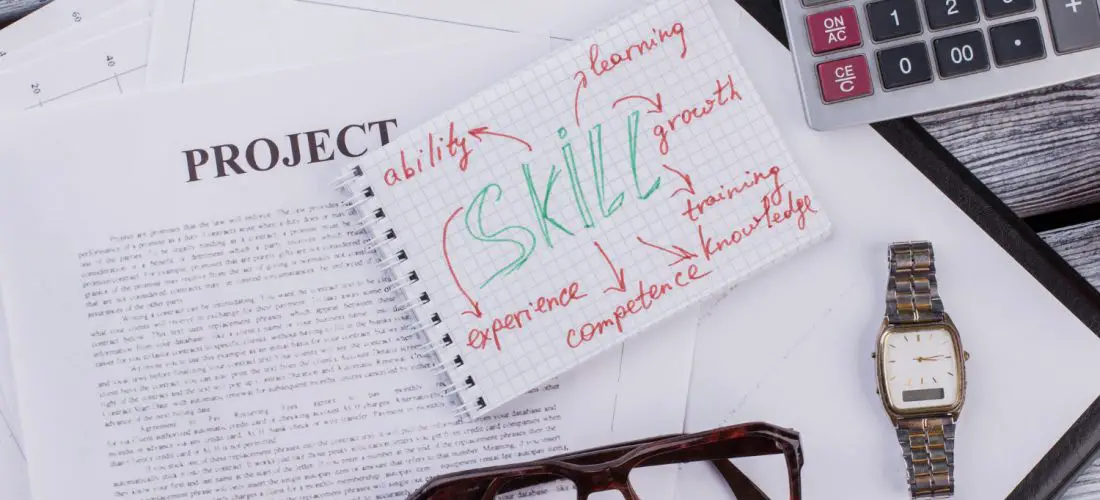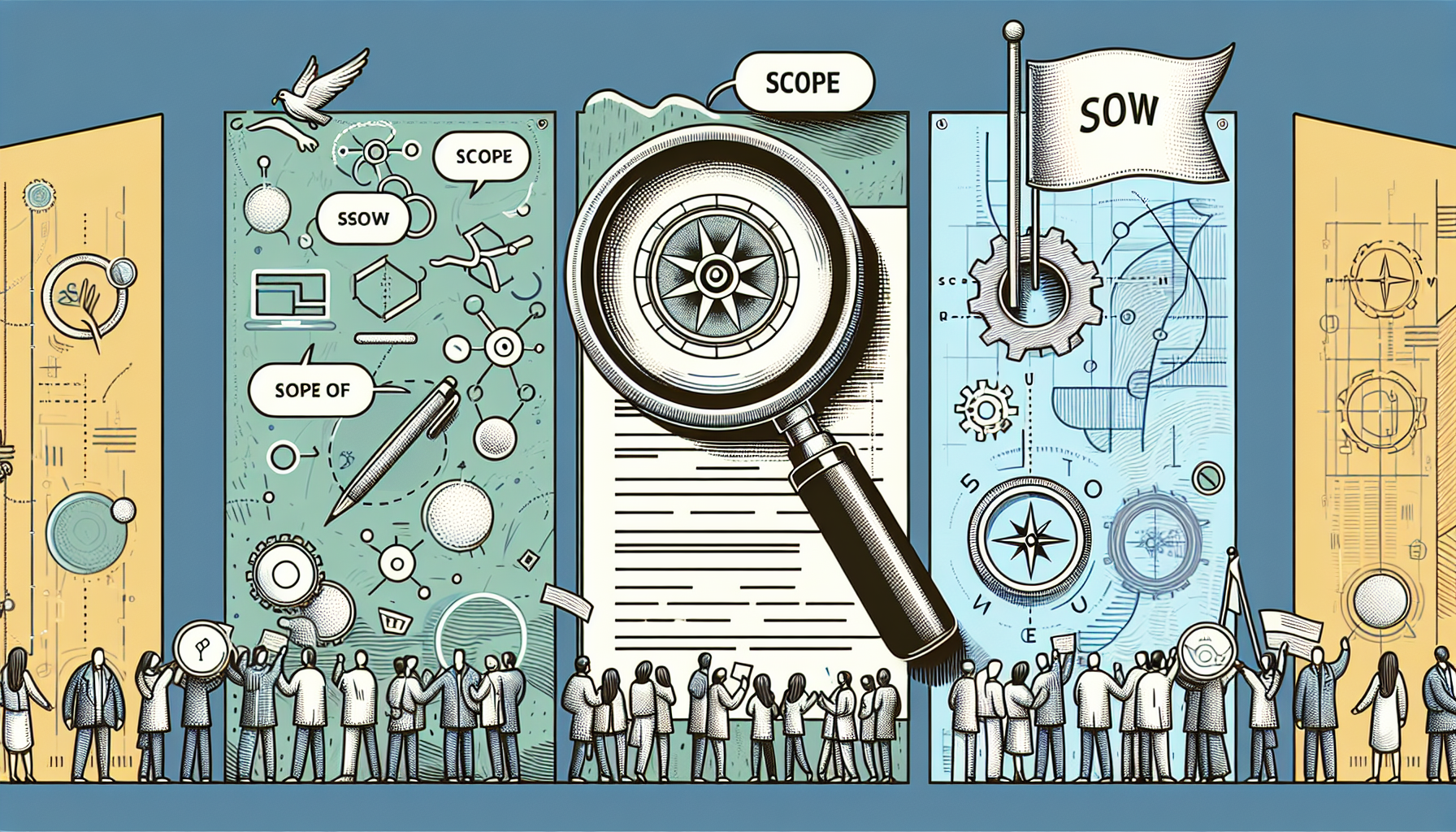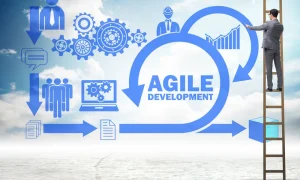Having trouble starting your project statement of work? This guide simplifies the process and offers a step-by-step approach on “how to write a project statement of work”. You will be able to clearly define the scope and objectives of work breakdown structure your projects with confidence after reading this.
Key Takeaways
- A Statement of Work (SOW) is a formal document that outlines the project objectives, scope, deliverables, payment terms, and timeline, ensuring all stakeholders understand their responsibilities and the project’s goals.
- Effective SOWs include SMART objectives, detailed scope of work with inclusions and exclusions, clear allocation of tasks and responsibilities, specified deliverables and deadlines, as well as outlined cost estimation, payment terms, and acceptance criteria.
- When writing an SOW, it’s essential to be specific and avoid ambiguity, collaborate with stakeholders, make use of templates, stay flexible to accommodate changes, and consider project management software to streamline the SOW creation process.
Understanding the Statement of Work (SOW)
A formal document known as the Statement of Work is the backbone of any project. A SOW is responsible for all the work aspects that will be performed by a vendor in a SOW. Some of its functions include regulating project scope, timeframe, and resources, among other imperative components. It also serves as a roadmap for the project team to help them reach their ultimate goal.
It identifies the goals and describes the precise duties that will be done under specified conditions, such as reimbursement, to each person involved. This makes sure that everybody cooperating comprehends their objectives and the part they perform in the project’s general accomplishment. The SOW essentially becomes an agreement between all people concerned.
It comprises all indicated objectives and obligations among others like the scope of work, deadlines dates, and result. This promotes proper work processes and maintains the potential to level responsibilities, which requires the assistance of a project through to the finish.
Key Components of an Effective SOW
Similarly to a well-built building, a well-executed project greatly depends on a properly developed SOW. Thus, it is crucial to address the following question: what does it mean that a SOW is effective? In the same manner that one can disassemble the characteristics that an architect compiles that determine the building’s structural integrity and functioning, one can extract and examine the components of the effective SOW. It include delineating the project’s objectives, scope, and deliverables in adequate detail and that all the parties involved clearly understand the direction of the project.
Project Objectives
First and foremost, all the goals of the project lay the path for its structure should be SMART – Specific, Measurable, Achievable, Relevant, and Time-bound. In that way, the goals do not only drive further development and implementation but also create a specific frame to measure the outcomes. Second, it is imperative to settle the match between the objectives and the purpose of the project.
To ensure that each line of work is clearly aimed at achieving the project goals, any objective should immediately reflect back to the general fins of the task. If one of the project objectives would be to give rise to a more efficient ordering system. Is more tracking to be integrated between various channels? Has accuracy increased whenever there is a decrease in faults during the orders fulfillment procedures? Are clients more satisfied with managing orders?
By establishing these targets explicitly, everyone involved can have a shared understanding of what outcomes are desired thus working together more effectively towards accomplishing said results.
Further Reading: Project Management: Unlocking Organizational Performance & Efficiency
Scope of Work
When deciding what is in and is out of the project scope, it is essential to do so properly due to its boundary-setting nature. Essentially, the scope is used as a map that outlines the perimeters where all tasks, items, and works should be recorded. However, it isn’t enough to paint the project with a broad brush; it is equally essential to state what isn’t on this map. Such an action prevails misunderstandings and conflicts, especially between parties with several projects assigned under a master services agreement.
When defining scope, clarity calls for precision and attention to detail. However, the best way to applying these parameters in scope can be building a specific one based on some strategies such as defining clear project objectives and involving as many stakeholders as possible. In addition to the clarification, being specific to known terms and requirements can establish success criteria to prevent problems when the project is underway.
Tasks and Responsibilities
On the other hand, dividing up what everyone is responsible for or can do on a team is guiding them. That way, people will easily know their duties and hence how they would be able to contribute to achieving the project. Properly guiding a team in terms of assignments and responsibilities in a SOW include giving members time-limits, careful consideration of one’s ability, delegating work to a specialist, and appointing a superlative project manager for coordination.
It must evidently be done after the scope and associated goals with the project have pervaded the other planning components, thereby ensuring clarity on how all the stakeholders may execute their responsibilities effectively. The task assignments related to an SOW generally involve documenting workflows, deliverables, and outcomes, roles and responsibilities across contracted parties. It also involves outlining expected milestones linked directly to the necessary elements/project outcomes .
Deliverables and Deadlines
Important is to indicate the significant points in your project roadmap – this should mark your deliverables and deadlines. It will be similar to signposts for you on which way should your project be moving and when it needs to be finished. In the SOW you must set what exactly should be delivered after reaching those heights – what specific products or services.
Deadlines are a way of defining the overall timeline of a project. They are a considerable help in making sure that the vital objectives and goals of the project are achieved in a reasonable amount of time. All agreed deliverables and associated deadlines should be documented, and it must be closely monitored to prioritize the allocation of team resources.
To build flexibility into both deadlines and deliverables, there are several strategies you can employ.
- Allow sufficient time for reviews and adjustments in the overall project schedule.
- Set up flexible timelines for major achievements or milestones.
- Develop collaboration processes during preparation of the SOW document which include procedures for requesting changes if necessary
Cost Estimation and Payment Terms
All the financial sides of the project directly relate to the budget, which can be developed by preliminary cost estimation and pricing conditions. They constitute a proper way to fully comprehend the project’s budget and allocate the costs properly between the provided resources. The final sum will equal the multiplication of team members’ hours spent on the project and their hourly rates, as well as the inclusion of the hardware and other facilities’ expenses.
Paying an additional agreed percentage on top of the initial assessment will shield you from surprising expenditures. The extent to which it is set out in a Statement Of Work is referred to as standard payment terms , which involve approved timesheets and invoices being submitted at the conclusion of each month, with a payment term of 30 days after the date mentioned on the invoice.
Therefore, to be able to efficiently manage the likely overspending from occurring, one has to: track the budget given to the project very closely, make sure to return to and update the cost estimates as often as possible, adjust to scope or requirements changes when it comes to the course of work, act on any viable strategies to reduce the risks, and then, communicate to all the stakeholders openly.
Further Reading: Risk Management: Ultimate Guide to Navigating Uncertainties
Acceptance Criteria and Sign-off
The completion of a project’s journey is accomplished after meeting the acceptance criteria of the project and all completion procedures. This ensures that all project deliverables are done according to the standard and meet an acceptable action. Acceptance criteria are established tangible and measurable conditions that the end product must meet for the product or the project to be accepted. They include; acceptances by owner, testing, quality reviews, on-time delivery, appearance, installation, among others.
Critical to this validation is that the acceptance criteria are well connected with the stated objectives. Another aspect that accompanies this process is the sign-off procedures, which are the official confirmation of the accomplishment of the project goals. This includes developing a sign-off sheet signed by all relevant parties, which clearly states the objectives and confirms that they have been completed such as in a structured process stipulated in the SOW.
Tips for Writing a Comprehensive SOW
Drafting a thorough SOW can be compared to planning for a successful trip. It entails thoughtfulness, effective communication, and adaptability.
Here are some helpful suggestions for creating an all-inclusive SOW:
- Restate the text without omitting any relevant details
- Retain all necessary information
- Rearrange phrasing and structure while maintaining the
Be Specific and Clear
As SOW is aimed to help you smoothly lead your project, it is crucial that it is specific and not subject to interpretation. Thus, when creating a Statement of Work, it is important to steer clear of the following: vague phrases such as “assist” or “work” and confusing technical terminology.
To improve clarity and specificity in a SOW:
- Use examples, visuals or diagrams
- Confirm understanding by gathering input from project stakeholders
- Clearly outline the scope of the project
- Quantify products/services when possible
- Write statements with an active voice
- Specify task assignments
It is crucial to ensure mutual understanding among all stakeholders regarding the details outlined in the SOW. This includes clearly stating both project objectives and requirements.
Collaborate with Stakeholders
Involvement of others is very much like when project managers and stakeholders collaborate with me, so that their ideas and suggestions will be added to the Statement of Work. This cooperation is important, since involving stakeholders creates an efficient dialogue, shared understanding and agreement to reach the main goal and ultimate success of the project.
Being able to effectively engage in the stakeholders during the creation would include planning for and bringing in the planning, acquiring them, and needing them to feel heard and respected, as well as establishing specific goals for every member of the organization. To best speak with stakeholders about the SOW would mean the ability to study them ahead of time, determine what their most critical interests are.
On top of it, reassure them how vital their input is, in some instances disguise ways to seek input, embracing active listening and addressing any worry, promoting dependence, encouraging trust and and compliance while still control expectations through adaptable communication practices.
Use Templates and Examples
When using templates and illustrative examples, it is like walking along a familiar path as part of your project management, These are the support that helps maintain all points that are essential for this kind of work template. The elements of e SOW template should contain scope issue, the results of work, or the received goods, the time period and resources required, the payment system, client service, and the schedule.
Project management tools from websites like G2.com also come with standardized frameworks to structure critical information. Additionally, the software package interfaces with the best practices, examples of good production, and helps you understand better, simplifying the clarity in the project lifecycle. Furthermore, they are validated on stakeholder assessment.
Stay Flexible and Adaptable
To incorporate flexibility and adaptability in an SOW strategy to: change one’s mindset, take on additional tasks, be aware of changing circumstances, be specific with aspirations, emphasize positive aspects such as opportunities and solutions, be inquisitive actively listen appreciate team diversity hire candidates with the indicated traits build a culture of continuous learning from the top through the levels follow a policy that does not make it exclusive to employees who do the project work.
As projects progress toward completion, there may arise new insights which require revisions throughout the project progresses through different phases including completing milestones. These should not only concern adapting techniques used but also updating plans according to emerging circumstances resulting from alterations made specifically in their initial phase.
SOW vs. Scope of Work vs. Project Charter
Understanding the differences between a SOW, scope of work and project charter is akin to discerning between a roadmap, detailed itinerary and travel guide. Each has its distinct purpose, but collectively they provide comprehensive guidance for your project.
The Scope of Work forms an integral part of the more extensive document that is the SOW. It outlines all tasks to be completed including deliverables, expenses and timeline details. In contrast, the Project Charter offers a broader overview while still providing ample detail on each aspect compared to solely focusing on work components as in the case with the SOW.
Overall, these three documents complement each other by presenting varying levels of formality alongside unique perspectives. The scope of work often assimilated into both reports fully illustrates overall visibility on multiple project aspects. By incorporating it into both sides, there’s complete understanding and collaboration involving several factors allowing for effective project management documents from start to finish when using these guidelines together.
Utilizing Project Management Software for SOW Creation
Think of project management software used as a highly advanced travel planner for your project journey. It simplifies the process of creating SOWs, promotes collaboration, and effectively manages tasks and resources. Some top options for project management software when it comes to SOW creation are ClickUp and other platforms available on G2.com.
Generation of SOWs is easily automated and simplified when using these tools due to fast creation, performance scaling, customer interaction, flow optimization, and effective change control. Moreover, file sharing is one of the many features available.
- Instant messaging services.
- Task organization systems.
- Team calendars, and graph charts that promote teamwork during SOW creation.
To streamlining the generation of a solid statement of work (SOW), using a project management tool or software can also simplify task allocation procedures while enhancing resource coordination through effective planning tools like scheduling organizers.
Besides this central role in optimizing workflow efficiency across teams via instant exchange mediums with team members concerning relevant documentation initiatives. PM software makes excellent allies to any aspiring or accomplished digital project manager, currently working towards delivering sound ‘project-aware’ deliverables under manageable timelines per stated directives from higher-up company ranks at large.
Further Reading: Best Alternatives of Microsoft Project: For Streamlined Project Management in 2024
Common SOW Pitfalls and How to Avoid Them
Crafting a SOW, like any journey, comes with its own set of obstacles. Being aware of these typical pitfalls and learning how to avoid them can help you smoothly navigate your project path. One common issue is creating an overly vague SOW which may result in:
- the expansion of scope
- missed deadlines
- financial challenges
- diverging interpretations among stakeholders.
Clarity and accuracy can be achieved by making it critical to provide precise definitions of those to be included in the project, what tasks action to be done by when and how, and how they should be conducted . Additionally, most people do not attempt to recruit all pertinent persons on board during the creation of the SOW.
For the development, including all project stakeholders’ pertinent ideas and feedback may add to and increase mutual understanding and agreement between concerned people. Neglecting SOW’s uncertainties can cause unanticipated problems that are difficult to measure . Increases the possibility not only of higher chances, but also of unfavorable results. To solve this issue, it is necessary to identify primary risks and focus on understanding them.
Summary
Writing a thorough Statement of Work is analogous to planning a successful voyage. It requires one to be precise and particular, work with others, accommodate changes and adopt relevant references. By learning the key principles of a good SOW, consulting with team members, using models or samples; and remaining open to changes.
With that said, it is possible to craft a SOW that allows for a successful project. As with much successful voyage, such a SOW relies on its ability to ensure that all passengers understand where the ship is heading.
Frequently Asked Questions
How do you write a project statement?
A project statement outlines the purpose of a project and defines its main goals. The scope, deliverables, exclusions, milestones, and potential limitations should also be included in the statement.
In order to complete this document for reference throughout the project phase over the course of the project’s duration, it is important that all key objectives are clearly stated along with any relevant constraints. Additionally, it is crucial to obtain approval from stakeholders before finalizing details about these aspects as well as getting sign-off on agreed upon boundaries within which work will take place.
What should be included in an SOW?
One of the key components to be included in a SOW are details related to the project’s scope. This encompasses all aspects and boundaries of the project, clearly defining project scope create what is within its range.
What is the difference between a Statement of Work, Scope of Work, and a Project Charter?
The primary distinction between a Project Charter, Statement of Work and Scope of Work lies in their focus. While the Statement of Work details the work to be done along with associated costs, the Scope of Work specifically identifies essential tasks and deliverables. On the other hand, a Project Charter provides an extensive and detailed overview, encompassing all aspects involved in the project.
How can project management software help in creating an SOW?
Employing project management software can simplify the process of creating a Statement of Work (SOW) by automating tasks and increasing productivity, while also fostering teamwork among team members. This technology has the ability to enhance collaboration within a project management setting and improve overall efficiency in completing SOWs.
What are some common pitfalls in SOW creation and how can they be avoided?
In order to steer clear of common errors when creating a Statement of Work (SOW), it is crucial to provide precise details, engage stakeholders, and address any potential uncertainties. By clearly outlining the project’s specifics and actively involving all relevant parties while proactively tackling any uncertainties that may arise, these pitfalls can be avoided in your statement of work process.









